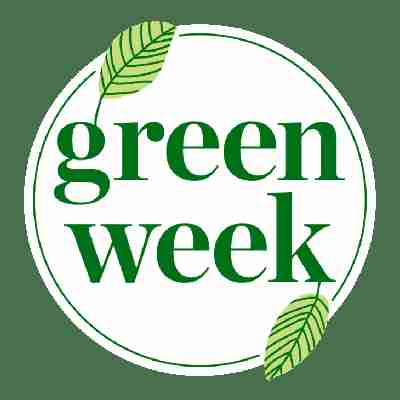

Welcome to Green Week at Apartment Therapy! We’re giving you advice on how to reduce waste, make eco-friendly choices, and explore what natural living really looks like. Check out all of our Green Living content here , and remember—little steps go a long way.
We’ve all been there: Pizza night comes to an end and you just don’t know what to do with the boxes. Or maybe you finish a latte and can’t decide what to do with the cup, or you wipe up a spill with paper towels and hover over your garbage can, unsure where it goes. In the name of doing the right thing, you chuck it into recycling and hope for the best before you quickly forget about the whole thing altogether.
That pre-recycling conundrum—the seed of doubt that enters your mind with every item you throw into the blue bin—is an incredibly common feeling. And the noble, well-meaning act of throwing something in the recycling and hoping for the best? Waste pros have taken to calling it wishful recycling, or “wishcycling.”
Wishcycling is a common response to environmental-related panic that stems from a desire to do good, but can have detrimental long-term impacts. While some wrongfully recycled items can be sorted out of batches, certain levels of contamination—from food waste, non-recyclable plastics, or plain old garbage like used diapers—can force entire loads to go to the landfill.
“Staff at recycling plants might get a load in from the back of the truck and—say it picked up a lot of contamination—instead of running it through the material recovery facility, they may choose to say that it’s too contaminated and they have to landfill the entire load,” explains Jill Martin, vice president of technical assistance for The Recycling Partnership , a national nonprofit that works to increase rates of curbside recycling.
Even though there might be some good quality recycling in load, Martin says, the level of contamination might make it too much of a burden to sort through. “They may have to make that judgment call to send it to the landfill. Which is not what they want to do,” Martin adds.
Another issue? Small items or other clog-causers, which can gunk up the sorting machines and cause delays or breakdowns. These can include things like bottle caps or contact lens cases—both of which are made from recyclable plastic but are often too small for machinery—or garbage or grocery bags, which are made out of plastic that’s not recyclable and represents a tangle hazard to boot. Another frequent clog culprit: wire dry cleaning hangers.
When contamination happens frequently, municipalities tend to take note, Martin says. If the cost of running a recycling plant outweighs the profit a community receives from selling its recycling, a common next step is rolling back recycling programs altogether.
“In some communities, if we don’t work on this contamination problem, there is a threat to eliminate the recycling programs or cut back on recycling services,” Martin says. “If wish-recyclers continue to do the wrong thing, there could be some communities that are thinking about eliminating recycling service altogether.”
That’s where work from The Recycling Partnership and GreenBlue’s How2Recycle Initiative come in. The former organization works to prevent this head-on by helping communities make recycling easier for their residents. The latter works with brands to label packaging as recyclable, making it easier for consumers to discern products that go in blue bins from ones that do not. Here, their best advice for figuring out what belongs where.
Plastic bags
Kelly Cramer, lead for the How2Recycle initiative, says that as a general rule, “rigid” plastic items like containers and bottles, are curbside recyclable, while “flexible” items—like candy wrappers, bubble wrap, sandwich bags, or grocery bags—are not. They can get easily caught in the machines used at sorting facilities and must be manually removed to avoid damaging the expensive machinery for good, which quickly becomes a headache for staff.
“The only way to get it out if that happens is to have people go in with a utility knife and cut out all the plastic bags and film out of there,” Martin says, noting that she’s witnessed this countless times firsthand. “Recycling plant staff are doing this every shift change at lunch, at breaks; there’s a lot of money, time, energy and effort spent on removing plastic bags from the equipment.”
See if your local grocery store has a recycling bin for bags; if not, direct these toward the garbage. And don’t bag your recyclables before tossing them in the bin—instead, make sure they’re loose.
Plastic food containers
Check with your local recycling program to see which types of rigid plastic are accepted; they’ll be denoted with number labels on the bottom of your food container. Even if your container is recyclable, make sure to rinse food containers first, and fully empty drink containers. A half-empty bottle of soda with the cap still on is completely unrecyclable and will be tossed—even though emptying it at home takes just seconds.
When it comes to bottle caps, instructions vary by municipality. Unless yours specifies “no caps,” the best course of action is to screw caps back onto the bottles before recycling, so that these don’t come loose and cause clogs.
Pizza boxes, egg cartons, and paper cups
Martin oversaw a public recycling plant in Wisconsin for over two decades before joining The Recycling Partnership a year and a half ago, and in her experience, grease stains are acceptable, while larger chunks of food, like pizza crust, sauce, or cheese stuck to the box, are not. Keep in mind that even if the bottom of the box is too soiled to recycle, the top can be torn off to recycle separately. But as with many items, this is regional: some municipalities accept pizza boxes, others do not, so check your local resources before doing anything.
Cardboard egg cartons can go in the recycling; styrofoam ones cannot.
As for paper cups, those go in the garbage: unlike pizza boxes, which are just cardboard, these have a plastic coating on the inside to keep liquids from leaking through.
Used diapers and tissues
These can’t be recycled at normal facilities, and throwing them in with the rest of your recycling means workers have to hand-pick them off the sorting line before the recycling process can start. It’s time-intensive and also gross. Don’t recycle these.
Batteries, light bulbs, and other electronics
These can often be recycled, but not through your typical curbside pickup. You’ll need to find a specialized recycling center to accept them. Many office supply or electronics stores have programs in place; your city also might be able to direct you to a drop-off facility.
Spray bottles
The bottom is good to toss in the plastic bin, provided the number matches up with the types of plastic your locality will accept. But the tops to spray bottles are also often not recyclable, Cramer notes, because many come with metal springs inside of them. “If that’s the case for that package, we say empty bottle, discard sprayer,” she says. Newer versions that have plastic springs are recycle-safe—so always check first.
The golden rule in times of recycling-related uncertainty? “When in doubt, check it out,” Martin says. “Make that extra phone call, check the website, find out about your local recycling program before you decide to make that decision whether to recycle it or throw it away.” And if you still aren’t sure? Better to be safe and toss it.
Ultimately, the best recycling decisions are informed ones. If your government has how-to sheets or easy printable guides to recycling, print one out and tape it near your recycling bin; and if they don’t, you can always make your own. Knowledge, Martin and Cramer agree, is the first step to combatting mis-cycling and wish-cycling.
“People want to do the right thing,” Martin says. “When they know what the right thing is to do, they do correct their behavior. This is something that we can change.”












